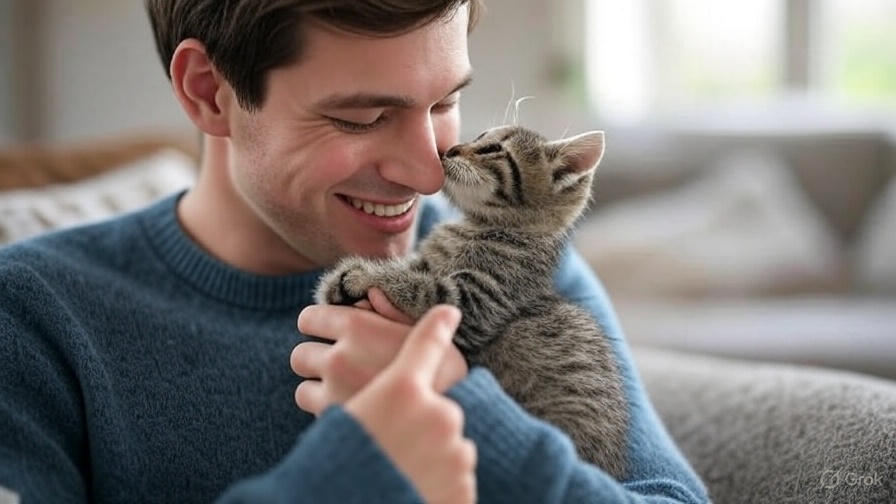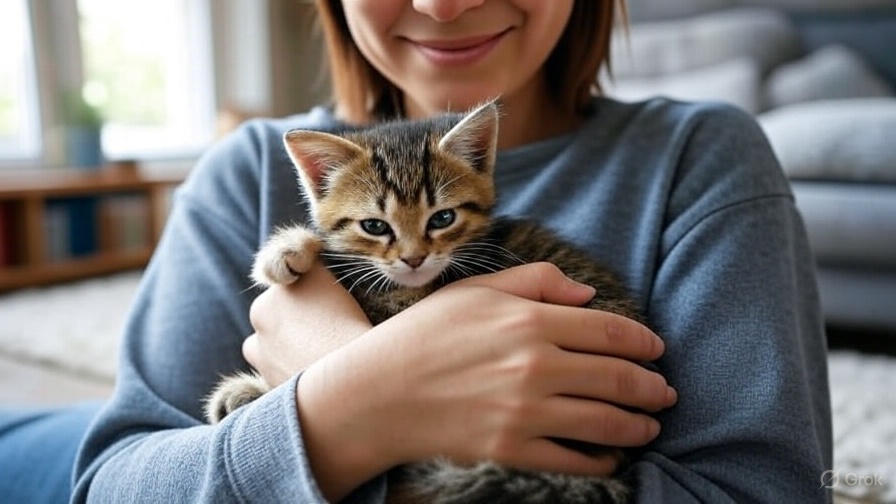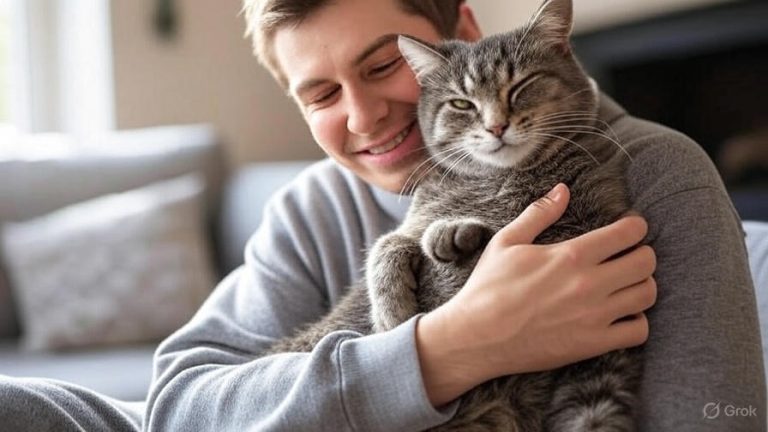How can I adopt a cat?
Adopting a cat can transform your life in wonderful ways. These amazing creatures bring joy, companionship, and endless entertainment to millions of households worldwide. However, bringing a new feline friend into your home requires careful planning and preparation.
This comprehensive guide walks you through every step of the cat adoption process. You’ll discover how to find the right cat for your lifestyle, prepare your home, and build a lasting bond with your new companion.
Why Adopt a Cat Instead of Buying?
Animal shelters across the country house thousands of cats waiting for loving homes. When you adopt from a shelter or rescue organization, you save a life while making room for another cat in need. Shelter cats often come spayed or neutered, vaccinated, and microchipped, which saves you money on initial veterinary costs.
Pet stores and breeders typically charge hundreds or thousands of dollars for cats. Meanwhile, adoption fees usually range from $50 to $200, making adoption both compassionate and economical. Many shelter cats are already house-trained and socialized, helping them adjust to your home more quickly.
Finding the Right Cat for Your Lifestyle
Your living situation plays a crucial role in determining which type of cat will thrive in your home. Apartment dwellers often do well with calm, indoor cats who enjoy lounging and playing with toys. Houses with yards can accommodate more active cats who might appreciate supervised outdoor time.
Consider your daily schedule before visiting shelters. Kittens require frequent feeding and constant supervision, while adult cats typically need less intensive care. Senior cats make excellent companions for people who prefer quieter, more relaxed pets.
Think about your energy level and activity preferences. Playful breeds like Bengal cats and Siamese cats need interactive toys and regular exercise. Laid-back breeds such as Persian cats and Ragdoll cats prefer gentler activities and plenty of cuddle time.

Where to Find Cats for Adoption
Local animal shelters serve as the primary source for cat adoption in most communities. These facilities house cats of all ages, breeds, and personalities. Staff members can match you with cats that suit your lifestyle and preferences.
Rescue organizations often specialize in specific breeds or age groups. Many operate foster programs where cats live in temporary homes until permanent families adopt them. Foster-based rescues provide detailed information about each cat’s personality and habits.
Online platforms like Petfinder and Adopt-a-Pet connect potential adopters with cats in their area. These websites allow you to filter searches by age, size, breed, and special needs, making it easier to find your ideal companion.
Veterinary clinics sometimes know about cats needing homes. Staff members often hear about litters or cats whose owners can no longer care for them. Building relationships with local veterinarians can lead to adoption opportunities.
Preparing Your Home for a New Cat
Cat-proofing your home ensures your new pet’s safety and prevents damage to your belongings. Remove toxic plants like lilies, poinsettias, and azaleas from areas your cat can reach. Store household chemicals, medications, and small objects that could cause choking in secure cabinets.
Install screens on windows and secure balcony railings to prevent falls. Block access to spaces where cats might get stuck, such as behind appliances or in crawl spaces. Cover electrical cords or use cord protectors to prevent chewing.
Create a comfortable sanctuary in a quiet room where your cat can adjust to their new environment. Set up a cozy bed, food and water bowls, and a litter box in this space. Include a scratching post and some toys to keep your cat entertained during the adjustment period.
Essential Supplies for Your New Cat
Stock up on necessary supplies before bringing your cat home. A sturdy carrier ensures safe transportation from the shelter to your house. Look for carriers with secure latches and good ventilation.
Litter boxes come in various sizes and styles. Most cats prefer uncovered boxes that are easy to enter and exit. Place the litter box in a quiet, accessible location away from food and water bowls.
High-quality cat food provides the nutrition your pet needs to stay healthy. Ask shelter staff about the brand your cat currently eats to avoid digestive upset during the transition. Gradually introduce new foods over several days if you plan to switch brands.
Scratching posts protect your furniture while allowing cats to maintain their claws naturally. Cats prefer tall, sturdy posts covered in sisal rope or carpet. Place scratching posts near sleeping areas and entrances to rooms.
Interactive toys keep cats mentally stimulated and physically active. Feather wands, laser pointers, and puzzle feeders provide entertainment and exercise. Rotate toys regularly to maintain your cat’s interest.
The Adoption Process Step by Step
Most shelters require potential adopters to complete an application before meeting cats. These forms ask about your living situation, experience with pets, and preferences for age and personality. Being honest helps staff match you with compatible cats.
Visit the shelter during less busy times when you can spend quality time with different cats. Observe how cats interact with you and respond to handling. Some cats approach visitors immediately, while others need time to warm up to new people.
Ask questions about each cat’s history, health, and behavior. Learn about their favorite activities, how they interact with other pets, and any special needs they might have. This information helps you make an informed decision.
Many shelters offer meet-and-greet sessions where you can spend extended time with a cat in a quiet room. These sessions reveal more about a cat’s personality than brief encounters through cage bars.
Health Considerations and Veterinary Care
Schedule a veterinary appointment within a few days of adoption. Even healthy-looking cats should receive a thorough examination to establish baseline health records. Bring any medical records provided by the shelter.
Discuss vaccination schedules with your veterinarian. Most shelters provide initial vaccinations, but your cat may need boosters or additional vaccines based on their age and health status. Keep vaccination records in a safe place.
Spaying or neutering prevents unwanted litters and reduces certain health risks. Many shelter cats are already altered, but young kittens might need surgery when they reach the appropriate age. Your veterinarian can recommend the best timing for this procedure.
Dental care often gets overlooked in cat health routines. Regular teeth cleaning prevents dental disease and maintains overall health. Start handling your cat’s mouth early to make dental care easier throughout their life.
Introducing Your Cat to Their New Home
Confine your new cat to their sanctuary room for the first few days. This allows them to adjust gradually without feeling overwhelmed by the entire house. Spend time in the room talking softly and offering treats to build trust.
Gradually expand your cat’s territory by opening doors to additional rooms. Supervise these explorations and provide hiding spots where your cat can retreat if they feel nervous. Most cats fully adjust to new homes within two to four weeks.
Establish routines for feeding, play, and bedtime. Cats thrive on predictability, and consistent schedules help them feel secure. Feed your cat at the same times each day and maintain regular play sessions.
Managing Multi-Pet Households
Introduce new cats to existing pets slowly and carefully. Keep the new cat separated initially while pets become accustomed to each other’s scents. Feed them on opposite sides of a closed door to create positive associations.
Supervised meetings should be brief and positive. Allow pets to see each other from a distance while engaged in enjoyable activities like eating or playing. Gradually decrease the distance between pets as they become more comfortable.
Provide separate resources for each pet to prevent competition. Multiple litter boxes, food bowls, and sleeping areas reduce stress and territorial disputes. The general rule suggests having one litter box per cat plus one extra.
Training and Socialization
Litter box training usually comes naturally to cats, but some may need guidance. Keep the box clean and easily accessible. If accidents occur, clean thoroughly with enzyme cleaners to remove odors that might attract repeat incidents.
Positive reinforcement works better than punishment for modifying cat behavior. Reward good behavior with treats, praise, or play. Ignore unwanted behaviors rather than yelling or using physical corrections.
Socialize your cat by exposing them to various people, sounds, and experiences gradually. Well-socialized cats adapt better to changes and feel more comfortable in different situations. Start socialization early but continue throughout your cat’s life.
Common Challenges and Solutions
Scratching furniture ranks among the most common complaints from new cat owners. Provide multiple scratching surfaces with different textures and orientations. Reward your cat for using appropriate scratching posts and cover furniture with protective materials if needed.
Excessive meowing can indicate various issues from boredom to health problems. Increase playtime and mental stimulation to address boredom. Consult your veterinarian if meowing increases suddenly or seems related to distress.
Litter box avoidance requires detective work to identify the cause. Medical issues, dirty boxes, or stress can trigger this behavior. Rule out health problems first, then examine environmental factors that might be causing the issue.
Building a Strong Bond with Your Cat
Spend quality time with your cat through interactive play sessions. Use toys that mimic prey behavior to engage their hunting instincts. Regular play strengthens your bond while providing necessary exercise.
Learn to read your cat’s body language and respect their boundaries. Cats communicate through tail position, ear movement, and vocalizations. Recognizing these signals helps you respond appropriately to your cat’s needs.
Create positive associations by offering treats and gentle petting during calm moments. Many cats enjoy being brushed, which also helps reduce shedding and prevents matting. Find activities your cat enjoys and incorporate them into your routine.
Long-Term Care and Commitment
Cat ownership represents a commitment that can last 15 to 20 years. Consider your future plans and ability to provide consistent care throughout your cat’s lifetime. Moving, job changes, and family additions all affect your pet’s stability.
Budget for ongoing expenses including food, litter, veterinary care, and emergency medical costs. Pet insurance can help manage unexpected veterinary bills. Regular preventive care costs less than treating serious health problems.
Senior cats need modified care as they age. Adjust their environment to accommodate mobility issues and schedule more frequent veterinary checkups. Many senior cats enjoy gentle play and comfortable sleeping areas.
The Rewards of Cat Adoption
Adopting a cat brings immeasurable joy and companionship to your life. These remarkable animals provide emotional support, entertainment, and unconditional love. Many cat owners report feeling calmer and happier after welcoming a feline friend into their homes.
Cats offer unique personalities and quirks that make each one special. Some cats greet their owners at the door, while others prefer quiet companionship. Discovering your cat’s individual traits creates a special bond that lasts a lifetime.
Your decision to adopt saves a life while making room for another cat in need. This act of compassion creates a ripple effect that helps countless animals find loving homes. Every adoption story begins with someone willing to open their heart and home to a deserving cat.
Taking the step to adopt a cat marks the beginning of an incredible journey filled with purrs, cuddles, and countless memorable moments. Your new feline friend will thank you with years of devotion and affection that make every moment of preparation worthwhile.







